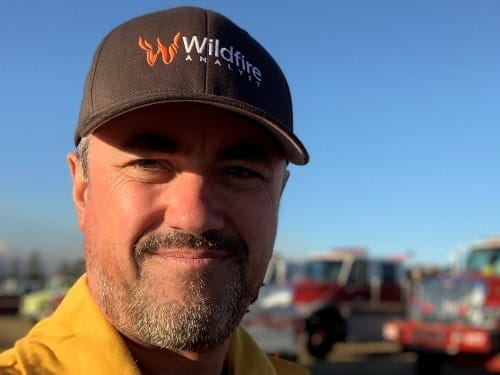IFSJ Influencer: Joaquin Ramirez, President, IAWF
- November 25, 2022
- 8:30 am


Iain Hoey
Share this content
President of the International Association of Wildland Fire (IAWF) Joaquin Ramirez shares his views
The most significant challenge facing our fire industry in 2023 is wildfire, but solutions are close at hand to make a difference now. The threat posed by wildfire is a global crisis and the only question going into 2023 is when and where the next hotspot will be.
Following the devastating 2020 and 2021 California fire seasons, I spent this past summer in Spain watching wildfires spread across borders and challenge the various prevention and suppression efforts that fire and forestry agencies valiantly made to reduce loss. The Mediterranean region, much like the western United States, faces prolonged heatwaves and a drier landscape that fuel the flames and place our communities and infrastructure at heightened risk.
Yet, with a new year in front of us, I see a pivotal role for science and technology solutions that can importantly forecast the consequence of wildfire. Simply knowing the probability of a wildfire does not explain what the possible consequences are, and no two ignitions are the same. Fire services need to be able to proactively plan for the risks ahead.
In this new reality of extreme wildfire, we cannot just suppress our way to the solution. While additional air resources, proper protective equipment, and firefighter training are certainly needed, fire modeling science can make those actions more effective and our firefighters safer on the line.
In the United States, CAL FIRE’s new Intel Unit is a great example of an agency using technology solutions to understand and act upon consequences from wildfire risk. They are using this knowledge to pre-deploy and advance pre-fire mitigation activities most effectively and efficiently on limited budgets. Every wildfire alert is immediately assessed to help define the appropriate response, as many of them can appear at the same time, like 600 within a week in August 2020.
At the same time, electric utilities are using wildfire risk modeling to better manage the risk their infrastructure can pose to wildfire ignitions. From asset hardening plans, to removing power from certain lines during high-risk weather events, they are making efficiencies in their systems with science to guide their efforts. Utilities can evaluate millions of virtual wildfires across the network. Preventing ignition starts before an extreme weather event happens can make the difference, as the tragic 2018 fire season reminds us.
As we enter 2023, the fire industry must acknowledge that living with wildfire is something we must accept. We cannot fight fire so aggressively anymore and expect the same result. Advancing the science behind risk modeling will improve prevention efforts towards resilient landscapes and provide fire agencies the planning tools to confront wildfire most effectively. Citizens too can be informed in advance and be a part of the solution with more precise and dynamic risk evaluation.
About the influencer
Joaquin Ramirez, PhD, is the Founder and Principal Consultant at Technosylva, Inc., in San Diego, CA. He is the current president of the International Association of Wildland Fire (IAWF) for 2022-2023 and is a professor of Technologies on Wildland Fires at the University of Leon (Spain).
This article was originally published in the November edition of IFSJ. To read your FREE digital copy, click here.



